Master Puppy Training: Unlock the Secrets to Success
Post Disclaimer
We may earn a commission for purchases made using our links. Please see our Disclaimer to learn more.
Discover the Secrets to Successful Puppy Training Today
Congratulations, on welcoming a member into your family! As a parent your utmost priority is ensuring the happiness and well-being of your furry companion. A crucial aspect of raising a pup is effective puppy training. In this blog post we will explore the secrets to training covering various topics such as understanding the challenges and rewards involved mastering house training techniques, basic obedience training, socialization training, exercise and playtime routines positive reinforcement methods and more. This comprehensive guide aims to equip you with the knowledge needed to become an expert in training and ensure that your beloved furry friend grows up to be an obedient and affectionate companion for years to come!
Understanding the Challenges and Rewards of Puppy Training
Training your puppy sets the foundation for a behaved adult dog. While it may present some challenges along the way the ultimate rewards make it all worthwhile. The process requires patience, consistency and positive reinforcement. By investing time and effort into early age training you can mitigate issues in the future while also cultivating a strong bond, between you and your furry friend. It’s crucial to keep in mind that when it comes to training it’s a journey. You may encounter distractions along the way. Need to teach your friends essential commands like sitting and walking with a leash. By utilizing methods and providing supervision you can positively influence your puppy’s behavior.
This is a wonderful puppy kit sold by Amazon. Has everything you need. 39 in 1 puppy daily essential kit. The reviews speak for themselves.
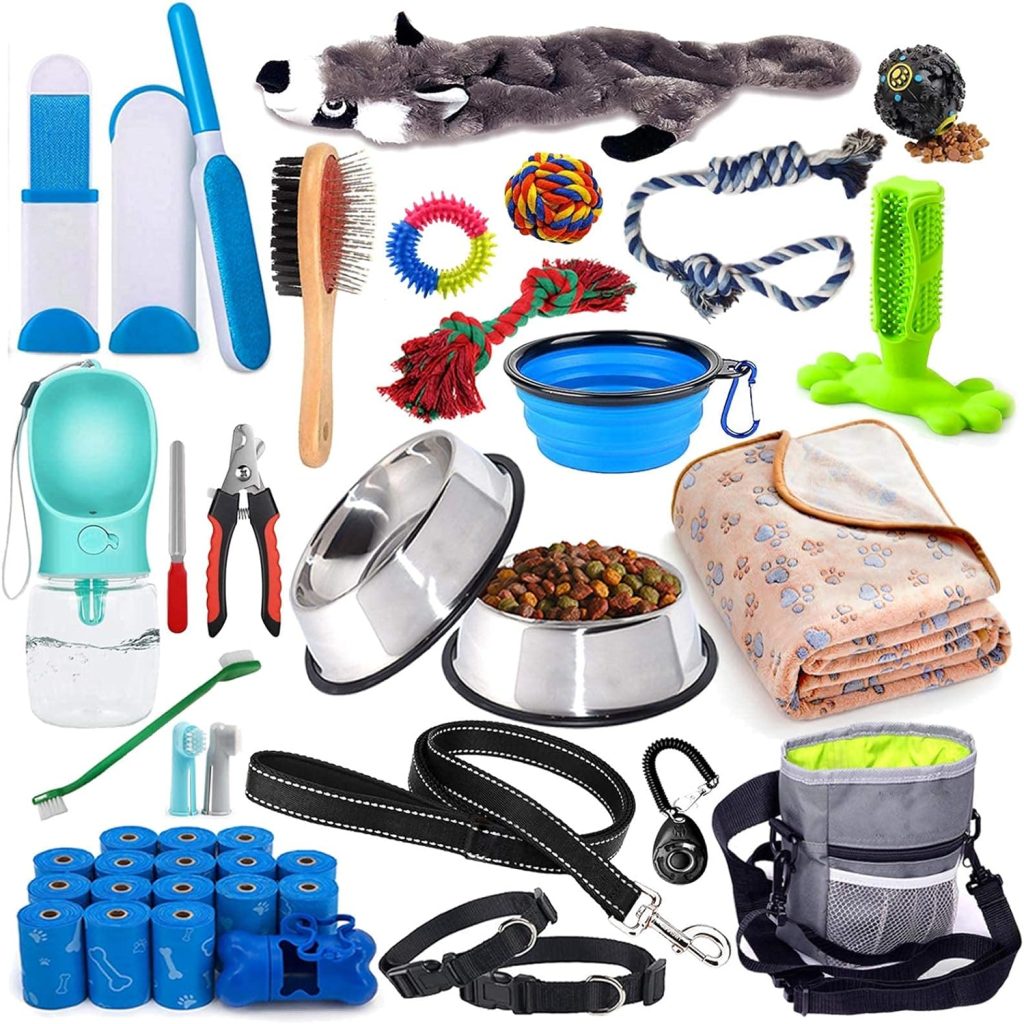
Why Is Training Your Puppy Important?
Training your puppy holds importance, for their safety and the well-being of others. It helps deter behaviors such, as chewing and digging while also instilling commands like sit and stay. Additionally, socialization training reduces the likelihood of fear or aggression ensuring they develop into rounded adult dogs.
Learn Your Puppy’s Potty Signs
One of the most important aspects of puppy training is teaching them how to properly go potty. However, before you can start training them to go outside, it’s essential to learn your puppy’s potty signs. This includes understanding their body language and behavior patterns when they need to use the bathroom. By paying attention to your puppy’s cues, you can help prevent accidents in the house and reinforce positive behavior when they do go outside. With consistency and patience, your puppy will be fully potty trained in no time.
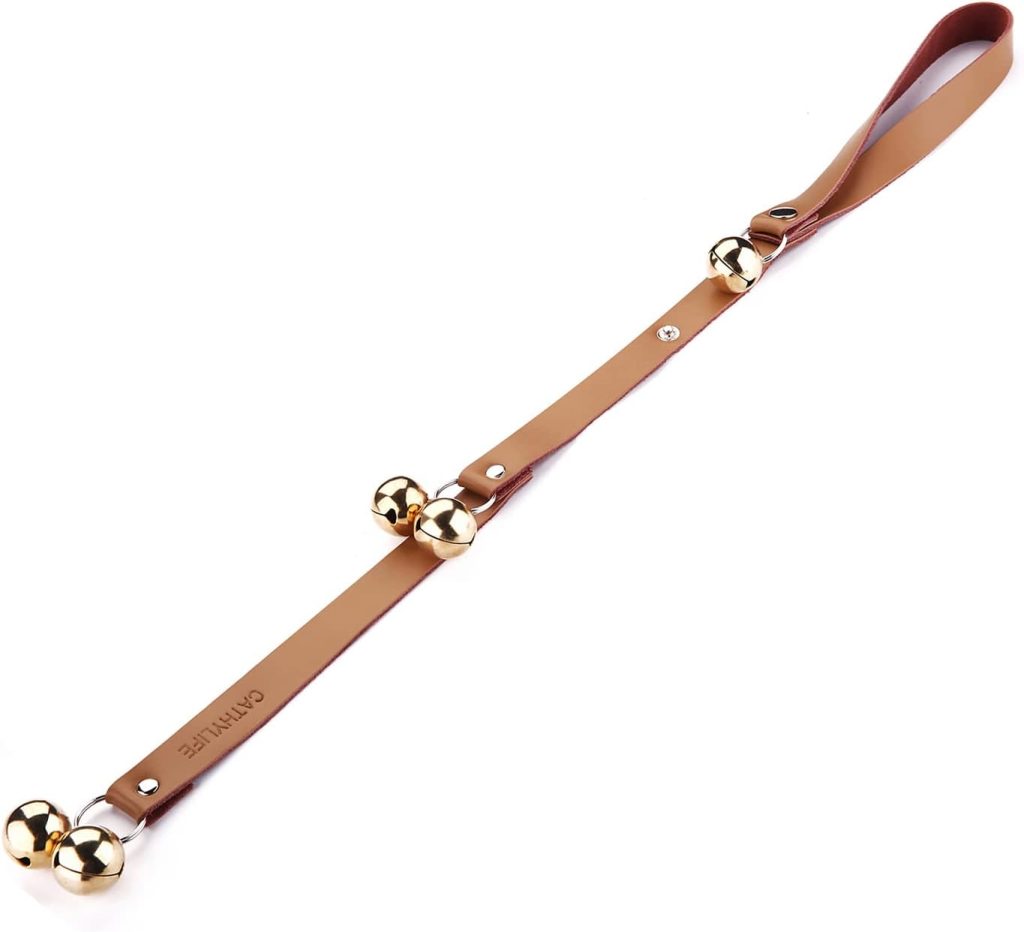
Establishing a consistent routine while taking your pup out frequently sets them up for success; make sure you praise them when they go potty outside. I love using a doorbell potty training system. This is an easy way for your dog to communicate with you. It really works great! It is a long bell on the door, and you would ring every time you went outside. Eventually, the dog/puppy relates the bell ringing to going outside and will learn pretty quickly to ring the bell when he/she needs to go outside.
How to Begin Behavior Training for Your Puppy
To get started with behavior training for your puppy and teach them new behaviors, it’s important to utilize positive reinforcement techniques. This entails rewarding and treating your furry friend when they display good behavior, like sitting and staying. It’s crucial to establish a consistent training routine, starting with basic commands such as sit and stay and gradually introducing more as your puppy progresses in their training. If your puppy is struggling to grasp a new behavior, conclude the session by revisiting something they already know well and shower them with praise and a substantial reward for their accomplishments. If you’re uncertain about the best approach, seeking guidance from a professional dog trainer is an excellent way to ensure you’re on the right path. Remember that training your puppy at an early age lays the groundwork for positive habits and helps prevent common behavioral issues in the future.
The Importance of Patience and Consistency in Behavior Training
When it comes to behavior training for your puppy, patience and consistency play a crucial role. Training a pup takes time, so it’s important to stay patient and not rush the process. Consistency is equally essential in helping your puppy understand and learn desired behaviors. By providing consistent feedback and reinforcement, you can help your puppy grasp what is expected of them. During training sessions, it’s important to remain calm and avoid getting frustrated. Remember to reward good behavior consistently to reinforce positive habits. With patience and consistency, you can set your puppy up for success in their behavior-training journey.
Mastering House Training: Techniques and Tips
Mastering house training for your puppy is crucial to maintaining a clean and happy home. Start by establishing a designated spot outside where your pup can go for potty breaks. Take them outside regularly, especially after meals and naps, to reinforce the behavior. Positive reinforcement and rewards are a great way to encourage your puppy to use the right spot. Remember to be patient and consistent throughout the training process, as it takes time for them to learn. By following these techniques and tips, you can successfully house-train your puppy and create a harmonious living environment.
How Can Crate Training Aid In-House Training?
Crate training can be a valuable tool in house training your puppy. By teaching them to hold their bladder and associate the crate with positive experiences, you can prevent accidents and establish a designated space for your puppy. Gradually increase crate time and make it cozy for them but avoid using it as punishment. Plus, begin crate threshold training by having your puppy pause calmly before barging out as soon as the crate door opens.
Basic Obedience Training: The Foundation for a Well-Behaved Puppy
Basic obedience training is essential for a well-behaved puppy. It teaches them important skills and commands that set the foundation for their future behavior. Starting with basic commands like sit, stay, and come, you can gradually introduce more complex commands, including dog training. Positive reinforcement is a great way to train your puppy, rewarding them when they obey commands. Consistent dog training sessions help them understand your expectations and reinforce good behavior. Obedience training is crucial for creating a well-behaved and obedient adult dog. By instilling these basic obedience skills from a young age, you can prevent common dog behavior problems and ensure a positive relationship with your furry companion.
Key Commands Your Puppy Should Know
To ensure successful puppy training, it’s essential to teach your pup key commands like the sitting position, stay, and come. Using treats and positive reinforcement is a great way to encourage your puppy to respond to these commands. Consistency is vital in training, so make sure to practice these commands regularly. As your puppy becomes more proficient, you can expand their command repertoire. However, if you encounter difficulties or want to teach more advanced commands, seeking guidance from a professional dog trainer is recommended. Remember, training your puppy is the foundation for a well-behaved and obedient adult dog.
The Impact of Socialization Training on Your Puppy’s Development
Socialization training plays a crucial role in your puppy’s overall development, helping them become well-adjusted and confident in various situations. It involves introducing your pup to different people, dogs, and pets in a controlled environment, gradually exposing them to new places and experiences. This exposure helps reduce the risk of fear and aggression as they grow older, contributing to their well-rounded development. By providing socialization training, you are setting your puppy up for success in their future interactions and overall behavior. With proper socialization, your puppy can navigate new experiences and people with ease, preventing the development of fears and phobias. This is essential for their maturity into adulthood.
Introducing Your Puppy to Other Dogs, Pets, and People

When introducing your pup to other dogs, pets, new people, and situations, it’s important to proceed slowly and in a controlled manner. Use positive reinforcement and rewards to create positive associations with these new interactions. Start with short and supervised interactions, gradually increasing the duration and intensity over time. The safety and well-being of your pup should always be a priority, so be sure to supervise all interactions. If your pup shows signs of fear or aggression towards others, it may be best to seek professional guidance. Remember, introducing your puppy to new experiences at a young age helps them develop into a well-socialized and confident adult dog.
Exercise and Playtime Training: Balancing Fun and Discipline
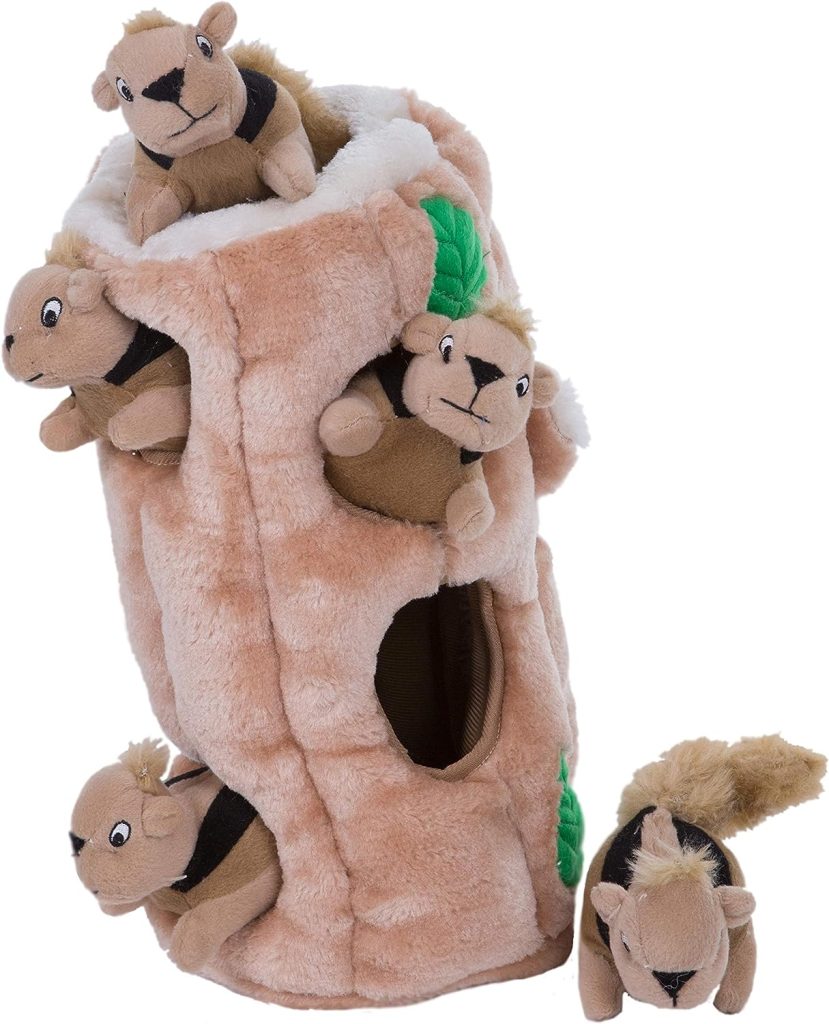

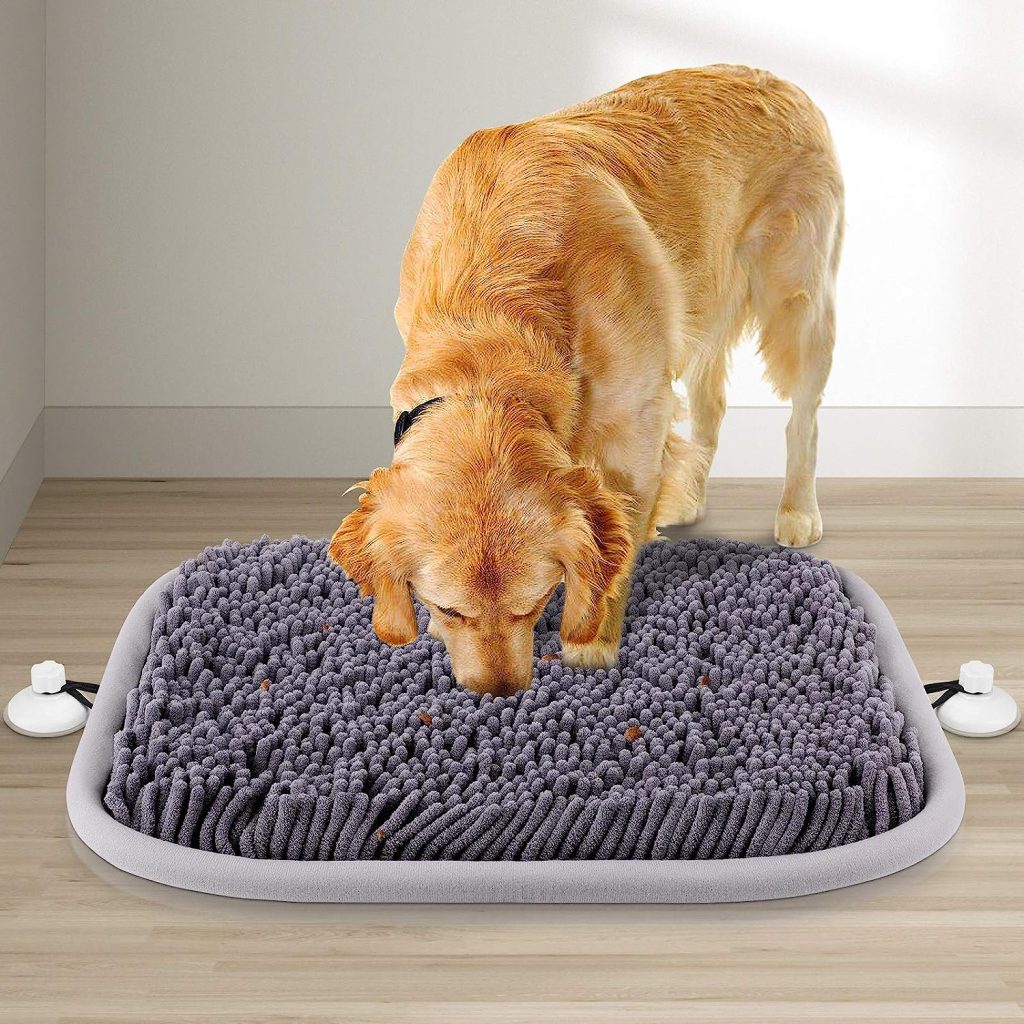
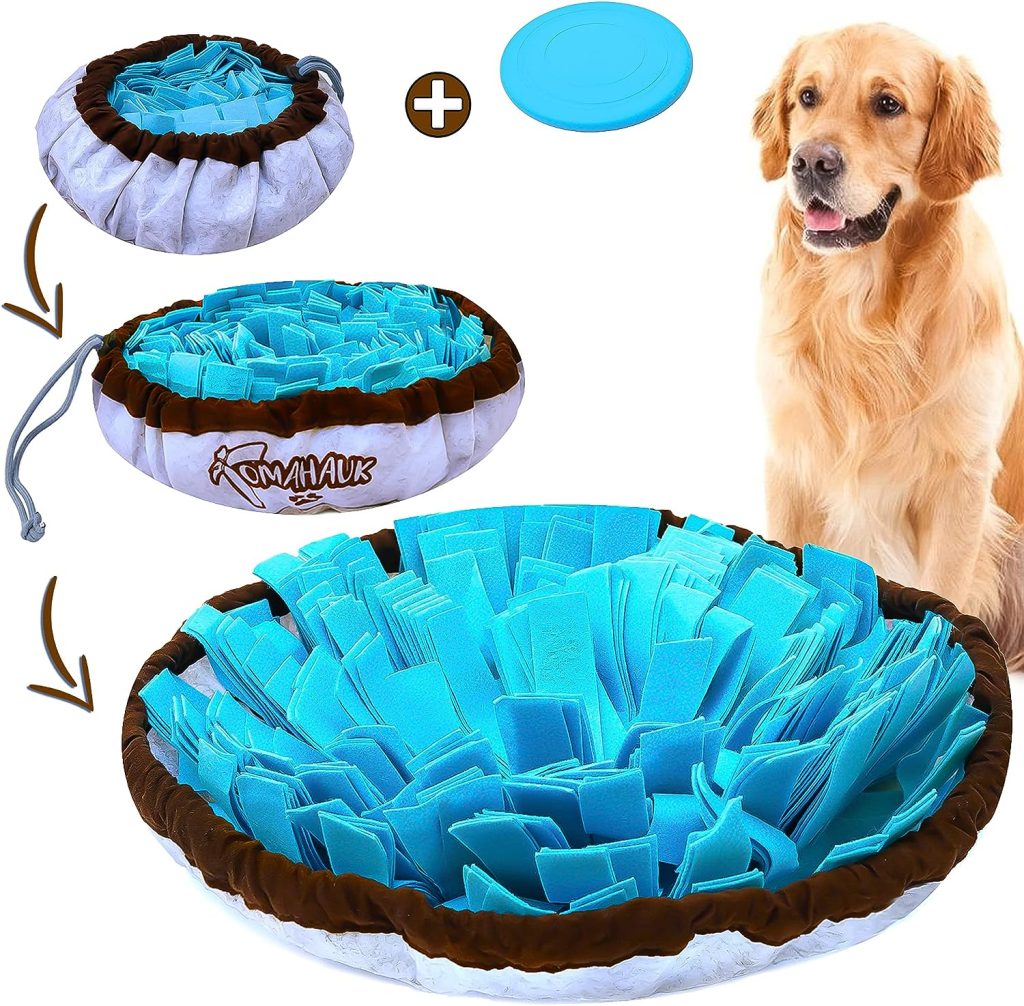
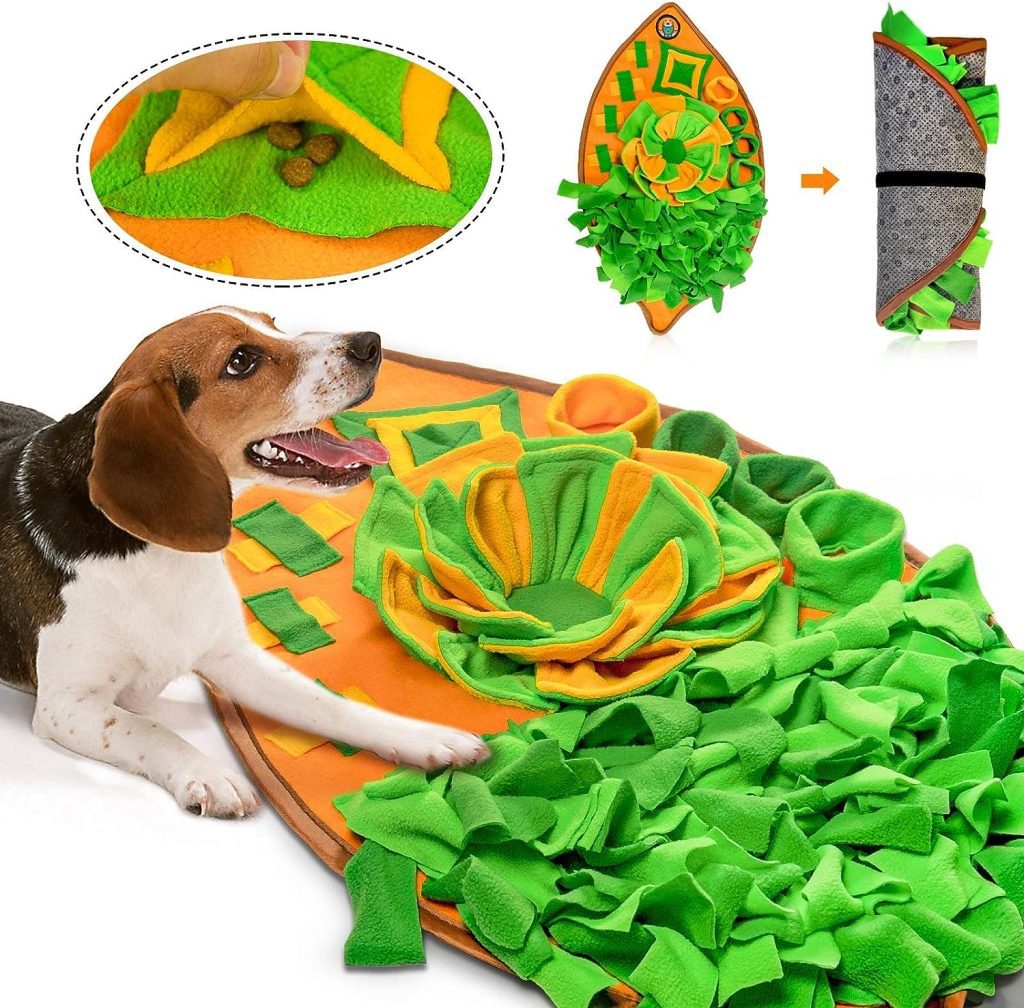
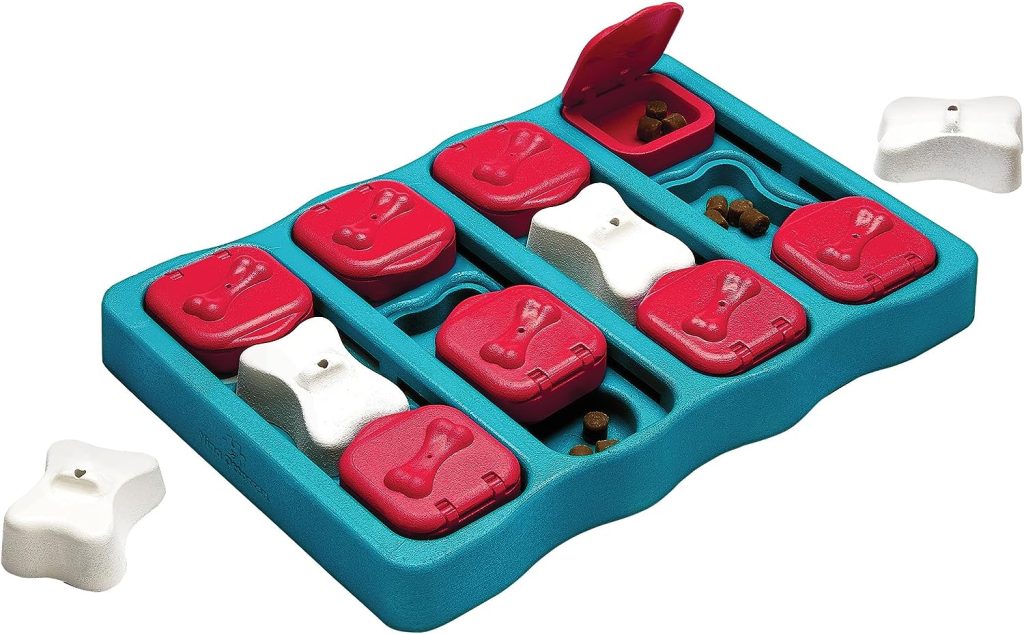
Regular exercise is essential for a pup’s well-being, as it helps release pent-up energy. To make exercise enjoyable, incorporate interactive toys and games during playtime training sessions. Positive reinforcement techniques, such as treats and praise, can be used to reward good behavior, fostering a balanced approach to discipline. Confinement is one of the tools in your arsenal when it comes to playtime training, ensuring the pup’s safety while they learn. Consistency is key, so maintaining a regular schedule for exercise and playtime establishes routine and stability. It’s crucial to create a safe and controlled environment for playtime training, ensuring the pup’s safety while they learn. By implementing these strategies, you can achieve a healthy balance between fun and discipline in your puppy’s training regimen.
How Much Exercise Does Your Puppy Need?
To meet your puppy’s exercise needs, consider factors like breed, age, and energy level. Aim for at least 30 minutes to 1 hour of physical activity daily, gradually increasing duration as your puppy grows. Keep them mentally stimulated with puzzle toys and obedience training exercises. Consult your vet for guidance.
Positive Reinforcement Training: Encouraging Good Behavior
Encouraging good behavior in your puppy is crucial for their development and training. One great way to achieve this is through positive reinforcement training, which involves using rewards such as treats, praise, and playtime. By utilizing these different methods of positive reinforcement, you can effectively reinforce the desired behaviors in your pup. It’s important to focus on rewarding them immediately after they exhibit the behavior you want to encourage. Clicker training can also be utilized to mark and reward specific actions or commands. It’s important to avoid punishment-based training methods as they can lead to fear and aggression. Consistency is key, so make sure to consistently reward your puppy for their good behavior.
Using Treats and Praise in Positive Reinforcement Training
When it comes to positive reinforcement training, using treats and praise is a great way to encourage your puppy’s good behavior. Choose small, soft treats that your pup finds highly motivating, and use a variety of treats to keep them engaged and interested in training. Pair the treats with verbal praise and an enthusiastic tone to reinforce positive behaviors. As your puppy becomes more proficient, gradually phase out the treats and rely more on verbal praise. Remember to vary the timing and frequency of treats and praise to prevent predictability. With this approach, you can effectively shape your puppy’s behavior and build a strong foundation for their training journey. Lavish praise or the chance to play with a favorite toy can also be used as a reward. Dogs must be taught to like praise. If you give the dog a treat while saying “Good dog!” in a happy voice, they will learn that praise is a good thing and can be a reward.
The Role of Consistency in Successful Puppy Training
Establishing consistent rules and expectations for your pup right from the beginning is crucial in successful puppy training. Using consistent verbal cues and hand signals for commands during training helps your furry friend understand and respond better. Enforcing consistent boundaries and routines prevents confusion and reinforces desired behaviors. It’s essential to involve all family members in training to ensure consistency across different environments, making it easier for your pup to grasp and follow the training. Remember, patience and persistence are key. Consistent reinforcement will lead to long-term success in training your new puppy.
What If Your Training Methods Aren’t Working?
If your training methods aren’t yielding the desired results, it’s essential to reassess your approach. Make sure your instructions are clear and consistent. Seek help from a professional trainer or behaviorist if needed. Consider alternative techniques like clicker training or positive reinforcement. Take into account any environmental factors that may be affecting your puppy’s progress. Remember, finding the right approach may take time and patience.
Are Puppy Training Classes Worth it?
Puppy training classes can be highly beneficial for both puppies and owners. Instructors provide guidance, support, and feedback on training techniques. Socialization with other puppies improves behavior, and classes address specific challenges. Investing in training classes can positively impact your puppy’s overall development and well-being.
What Can You Expect from a Puppy Training Class?
A puppy training class offers structured lessons on basic commands, leash walking, and socialization skills. It provides opportunities for supervised interactions with other puppies and people. Trainers also address common behavior issues like housebreaking and chewing, offering individualized attention to specific concerns in a supportive environment.
What Are Some Common Mistakes in Puppy Training?
Common mistakes in puppy training include inconsistency in enforcing rules and boundaries, using punishment-based training methods that can cause fear and anxiety, failing to properly socialize the puppy, overlooking the importance of mental stimulation, and neglecting to establish a consistent routine for potty training and meal times.
Conclusion
In conclusion, successful puppy training requires patience, consistency, and a deep understanding of your puppy’s needs. It’s important to establish a strong foundation of basic obedience training and house training while also focusing on socialization and exercise. Positive reinforcement is key in encouraging good behavior, and consistency is essential in reinforcing the training methods. If you find that your training methods aren’t working, don’t be discouraged. Seek guidance from professional trainers or consider enrolling in puppy training classes, which can provide structure and expert guidance. Avoid common mistakes in puppy training by staying calm and avoiding punishment-based methods. Remember, the journey of training your puppy is filled with challenges, but the rewards of a well-behaved and happy companion are worth it.


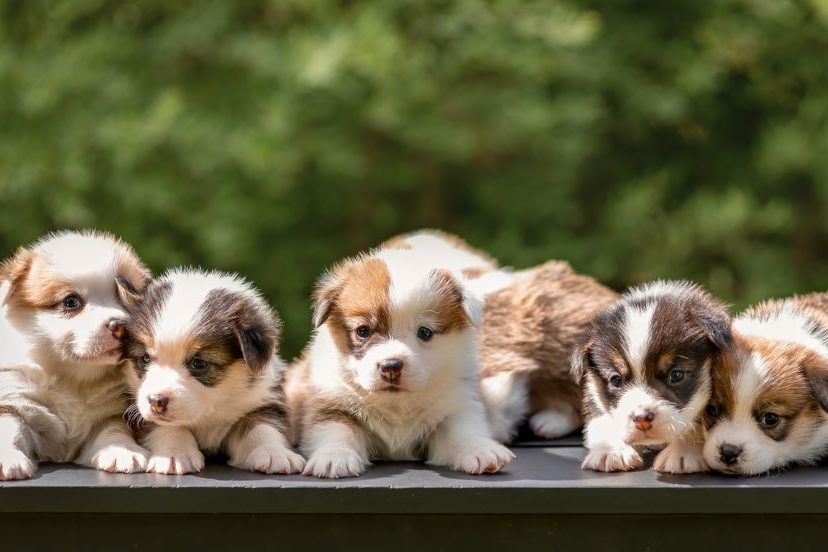

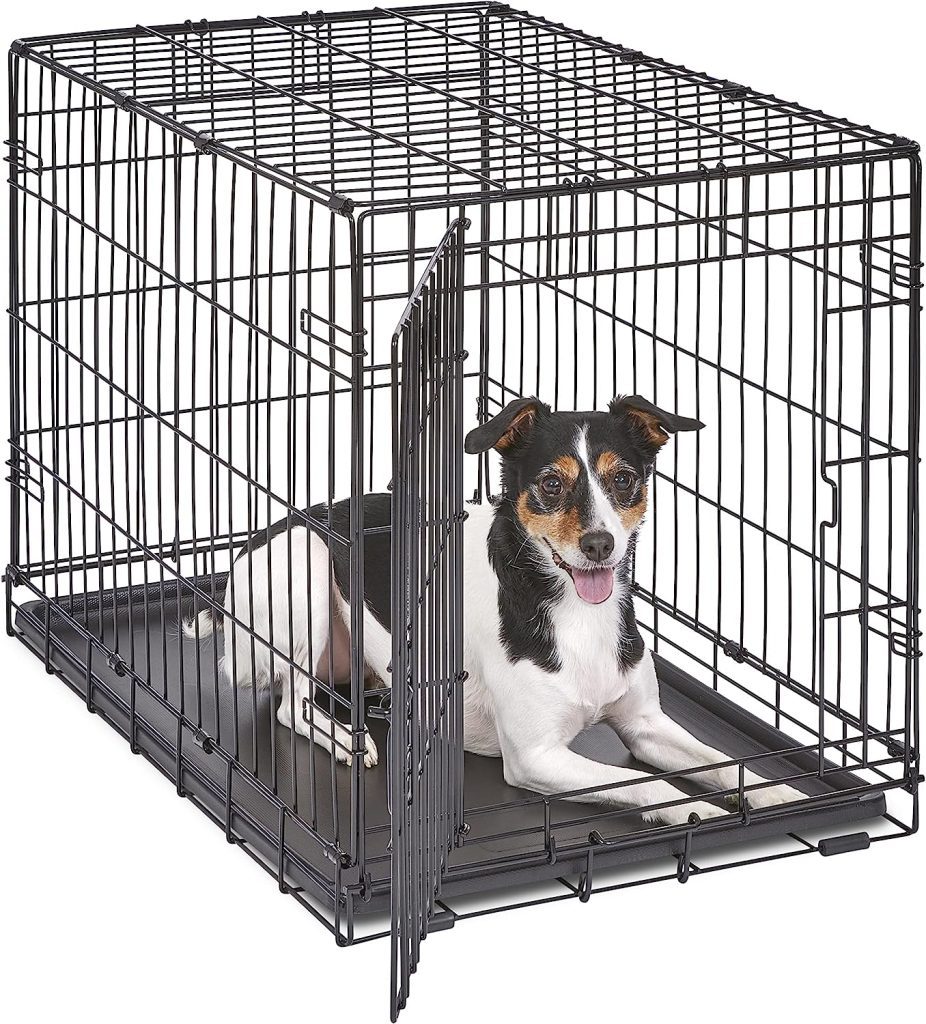




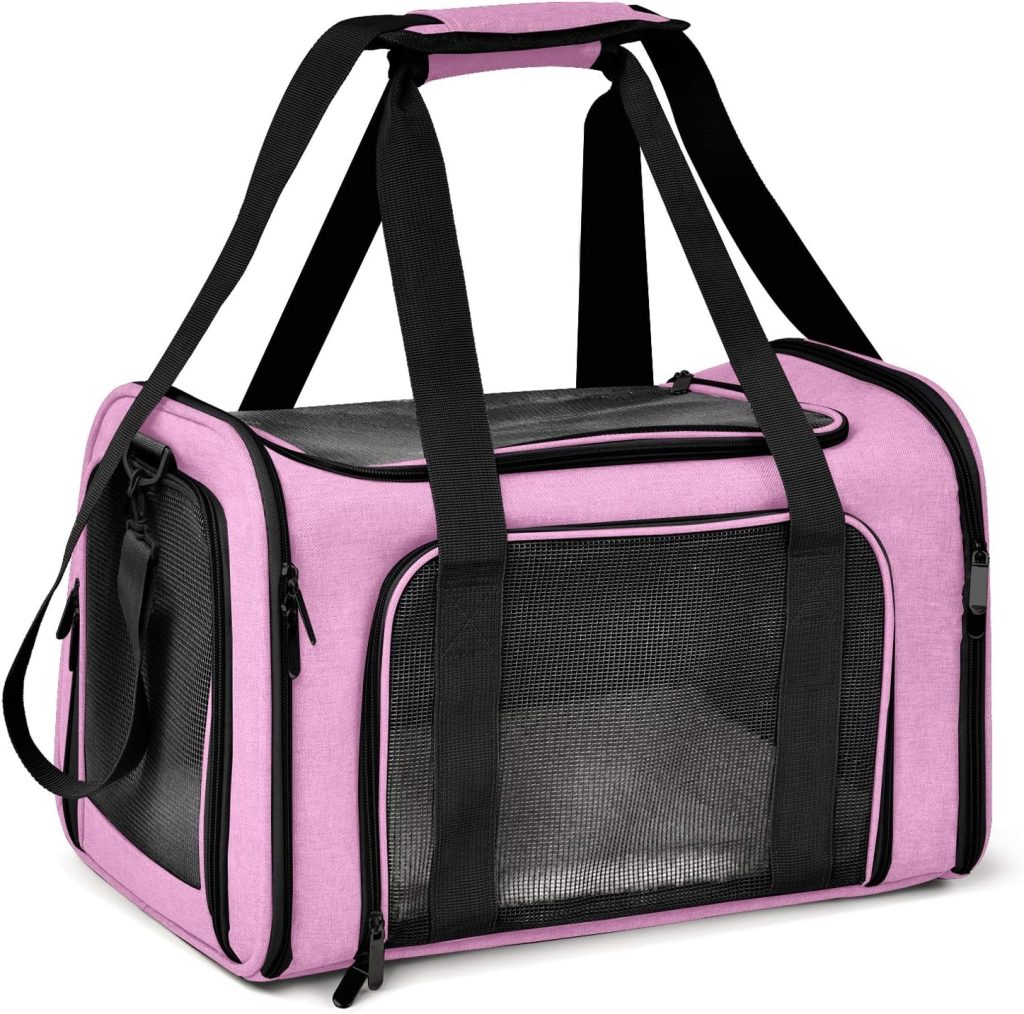



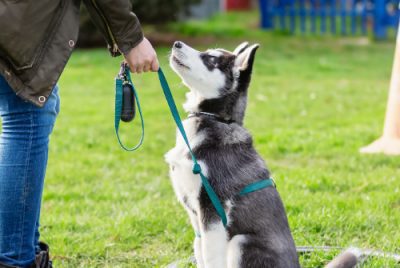
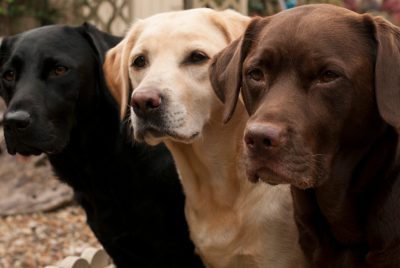

Comments are closed.